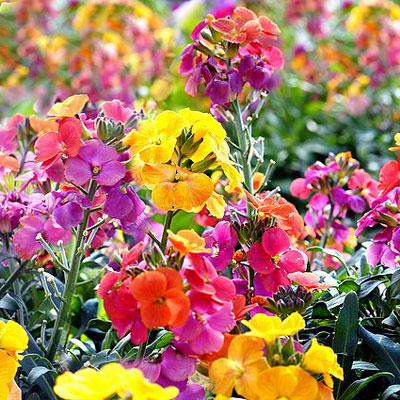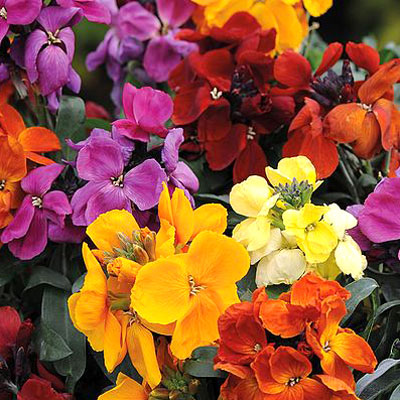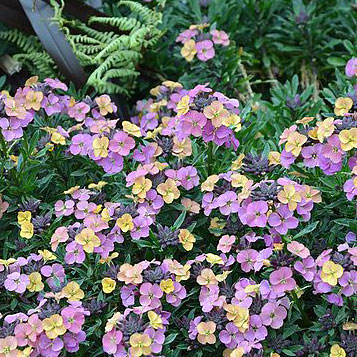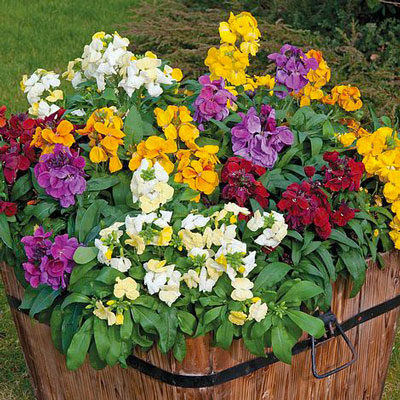Not Your Common Winter Annual Flower
I learned about wallflowers from my friend Phil Huey with the City of Dallas Park Department. Fact is, I learned a lot from Phil on many topics. But speaking of this plant, it wasn’t very popular back then.

And then Steve Huddleston, who writes for e-gardens monthly, in his capacity as senior horticulturist and then public relations director at the Fort Worth Botanic Garden told my radio listeners about them 4 years ago on my program. They hadn’t moved very far up the list even in those ensuing 45 years.

I’ve only grown them a couple of times myself, and I recall seeing them in home landscapes just a handful of times. Which is why I found no photos in my own files to use with this story.
But never fearing (a) a lack of knowledge or (b) illustrations, I forge forward into the darkness. I’ll still tell you about them because, like my two friends, I think this plant deserves to have a horn tooted in its behalf.

Here’s what you’ll need to know…
Common name: Wallflower. According to the Missouri Botanical Gardens, the common name derives from the fact that the plants are commonly seen growing “…in little pockets of gritty soil on stone walls.”
Occasionally referred to as “gillyflower,” but I can’t hear my lips saying that word. To complete the thought, however, it involves translations from Latin to “Old French” to “Old English.” Or something like that. Horticulturists aren’t paid to understand that stuff, so you and I are going to stick with “wallflower.”
Scientific name: Erysimum sp. There are scores of species in this genus. Historically many horticulturists have known the plant as Cheiranthus cheiri.
Native home: Europe. It is more popular in European gardens than here in the States. In fact, most seed sources are from England.
Plant family: Brassicaceae (along with cabbage, broccoli, cauliflower, stocks).

Annual/Perennial: Neither. Actually, it’s a biennial, meaning the seeds sprout one year, then they flower and produce seeds the following year. However, we gardeners generally treat it as a cool-season annual by planting it in fall in South Texas or late winter farther north. It can handle the cold.
Hardiness Zones: 5-10 (that means all of Texas and beyond).
Mature size when blooming: 10 to 18 in. tall and wide.
Flower colors: Yellow, orange, pink, blue, purple.
Fragrant: Yes
Sun/Shade: Full sun to morning sun, afternoon shade.
Soil needs: Neutral to slightly alkaline. Well-draining, in fact, does well in sandy ground. Use of expanded shale to break up heavy clays would be wise.
Note: Your biggest challenge will probably be in finding wallflower transplants in nurseries. If you do, grab 8 or 12 and give them a try. They could give your garden a new look this spring.
Photo credits: As mentioned, I had trouble finding any wallflower photos in my own files. I thought I had some. The ones you see are from the long-proven Thompson and Morgan Seed Company (founded in 1855 – so they should know!)
